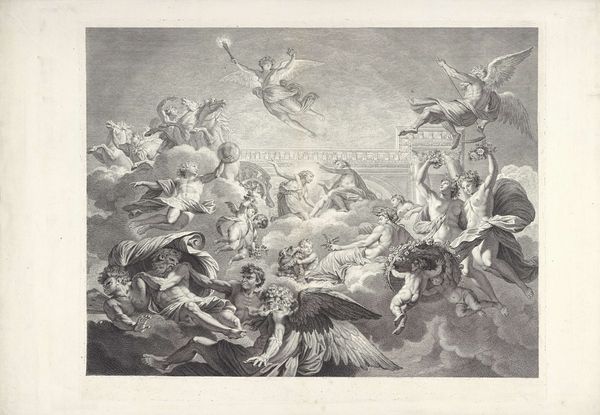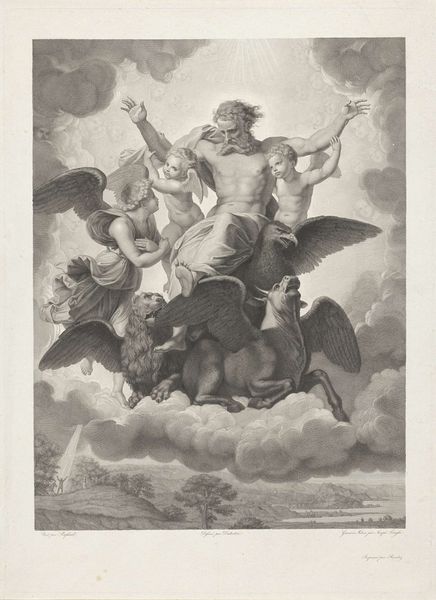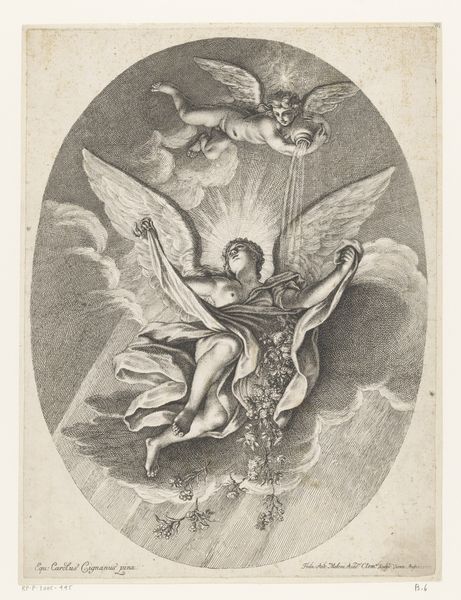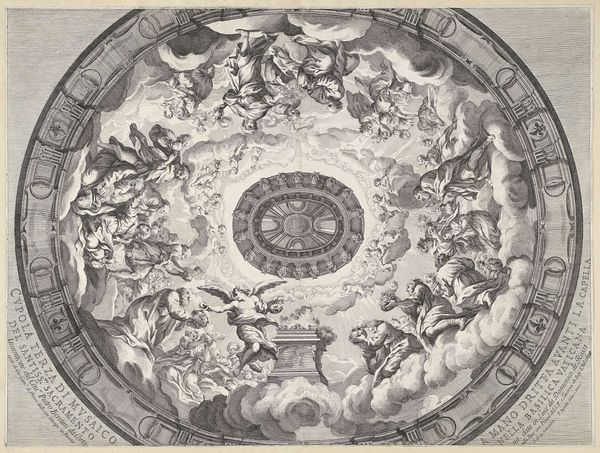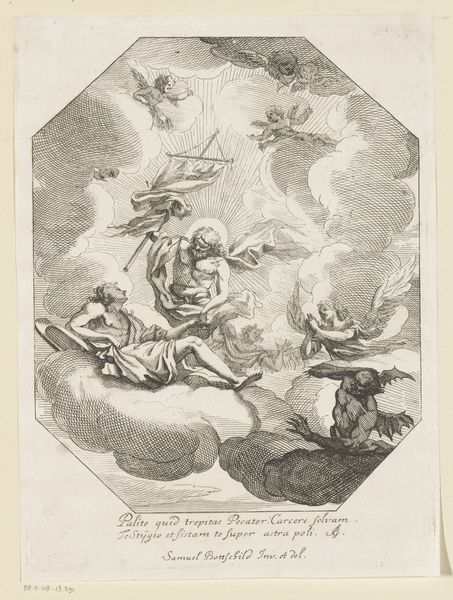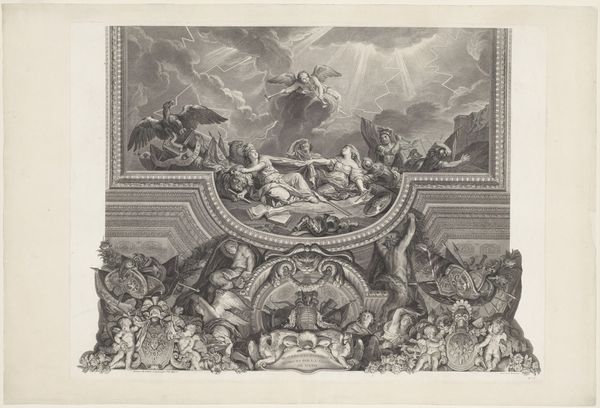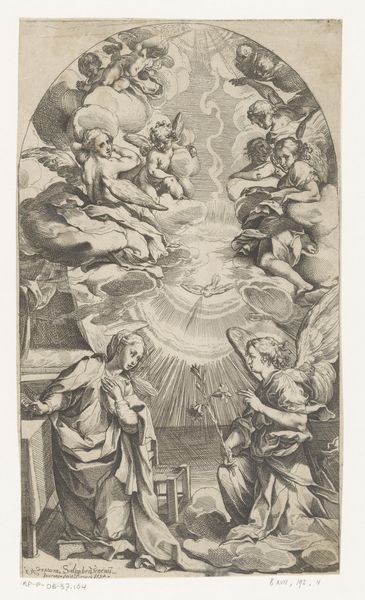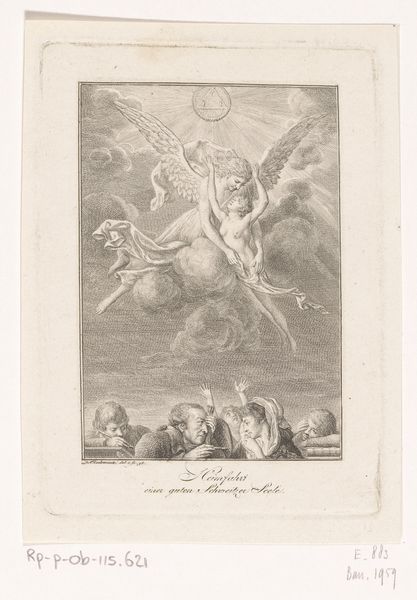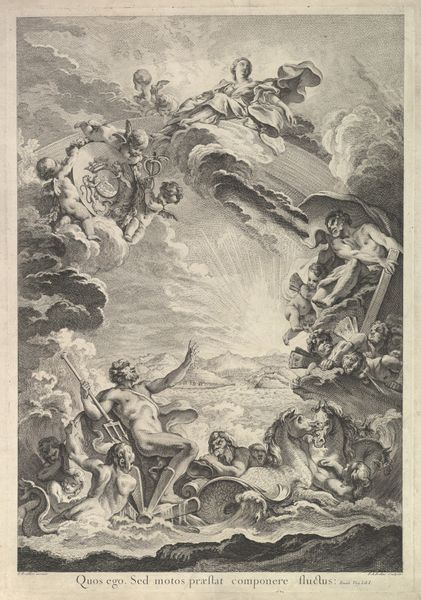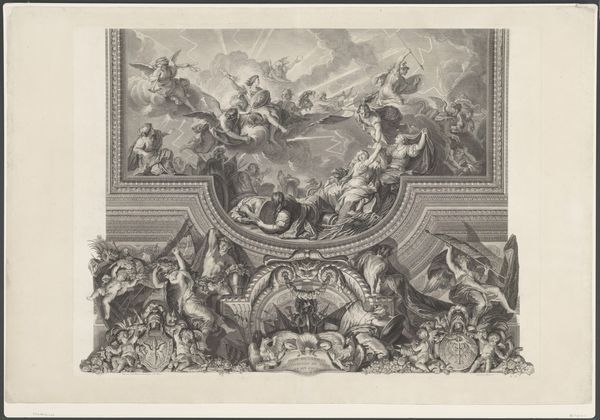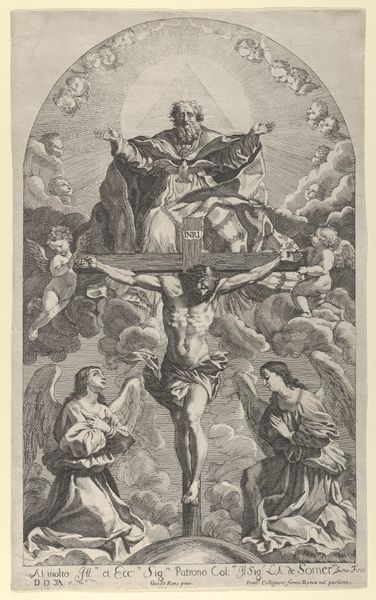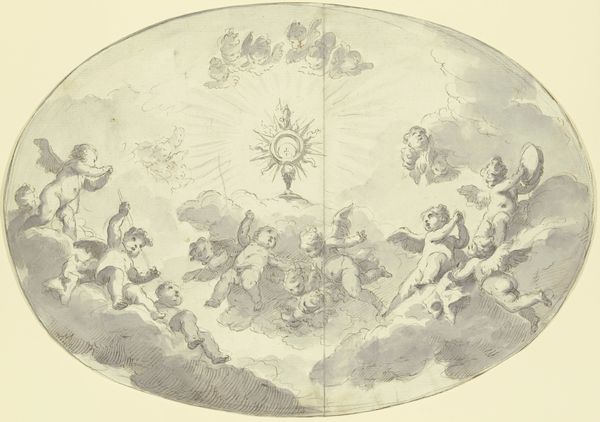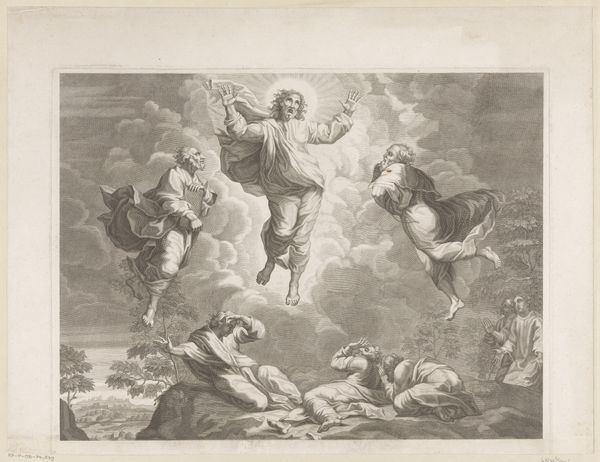
print, engraving
#
allegory
#
baroque
# print
#
old engraving style
#
engraving
Dimensions: height 337 mm, width 410 mm
Copyright: Rijks Museum: Open Domain
Editor: This engraving, "Four Angels Around the Monogram of Christ" by Jan Punt, created around 1751, is incredibly ornate. The cherubic figures are almost saccharine, and the rays emanating from the IHS monogram give it an intense, devotional quality. What's your take on this, considering its place in history? Curator: It’s important to remember the societal function of prints like these in the 18th century. Religious imagery was incredibly powerful, used not just for private devotion but also for public messaging. How do you think the average person might have encountered an image like this? Editor: Maybe in a church or a wealthy home? It feels like something designed to inspire awe. Curator: Exactly. Think about the socio-political landscape: The Baroque style was heavily embraced by institutions like the Church and the aristocracy. The print medium also made religious artwork much more widely available than paintings, thus democratizing viewership even as it promoted centralized power. Consider, too, that allegory served specific ideological functions during that period. What do you see at play in this image, particularly concerning the viewer's perspective? Editor: Well, the angels are literally looking down on you, reinforcing the idea of divine authority. And the radiance of the monogram almost forces you to submit to it. I hadn't really considered how power dynamics were so explicitly woven into art. Curator: And that power extends beyond just the religious context. Think about how the institutions that commissioned and distributed works like these shaped the way people thought about faith, about social order, and their place within it. Editor: That’s fascinating! I always viewed Baroque art as just being elaborate and decorative, but seeing it as a form of social and political persuasion really changes things. Curator: Precisely. And that understanding allows us to see how artistic choices are never truly neutral, and how even something as seemingly simple as a religious image can be a tool for maintaining the status quo.
Comments
No comments
Be the first to comment and join the conversation on the ultimate creative platform.
